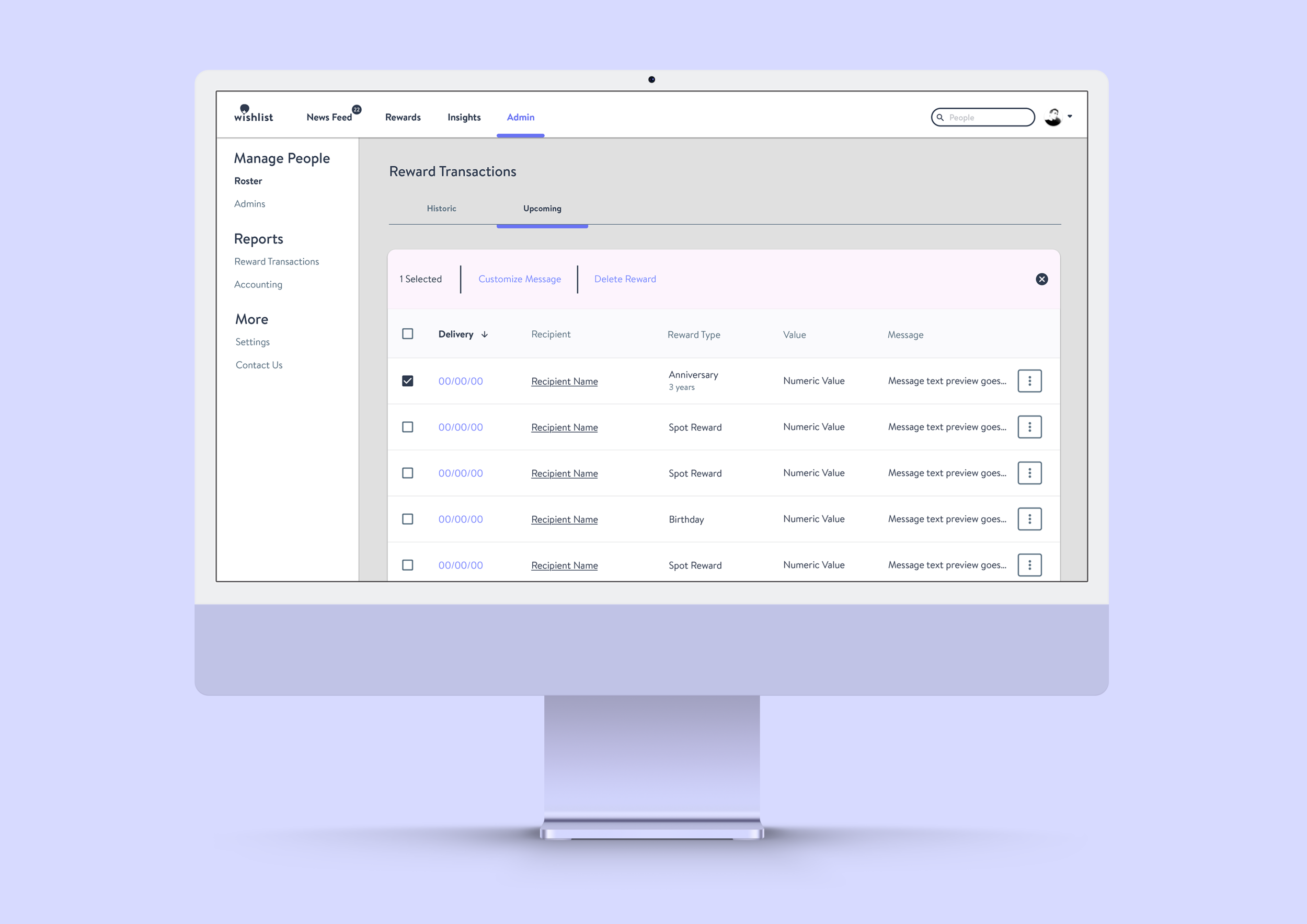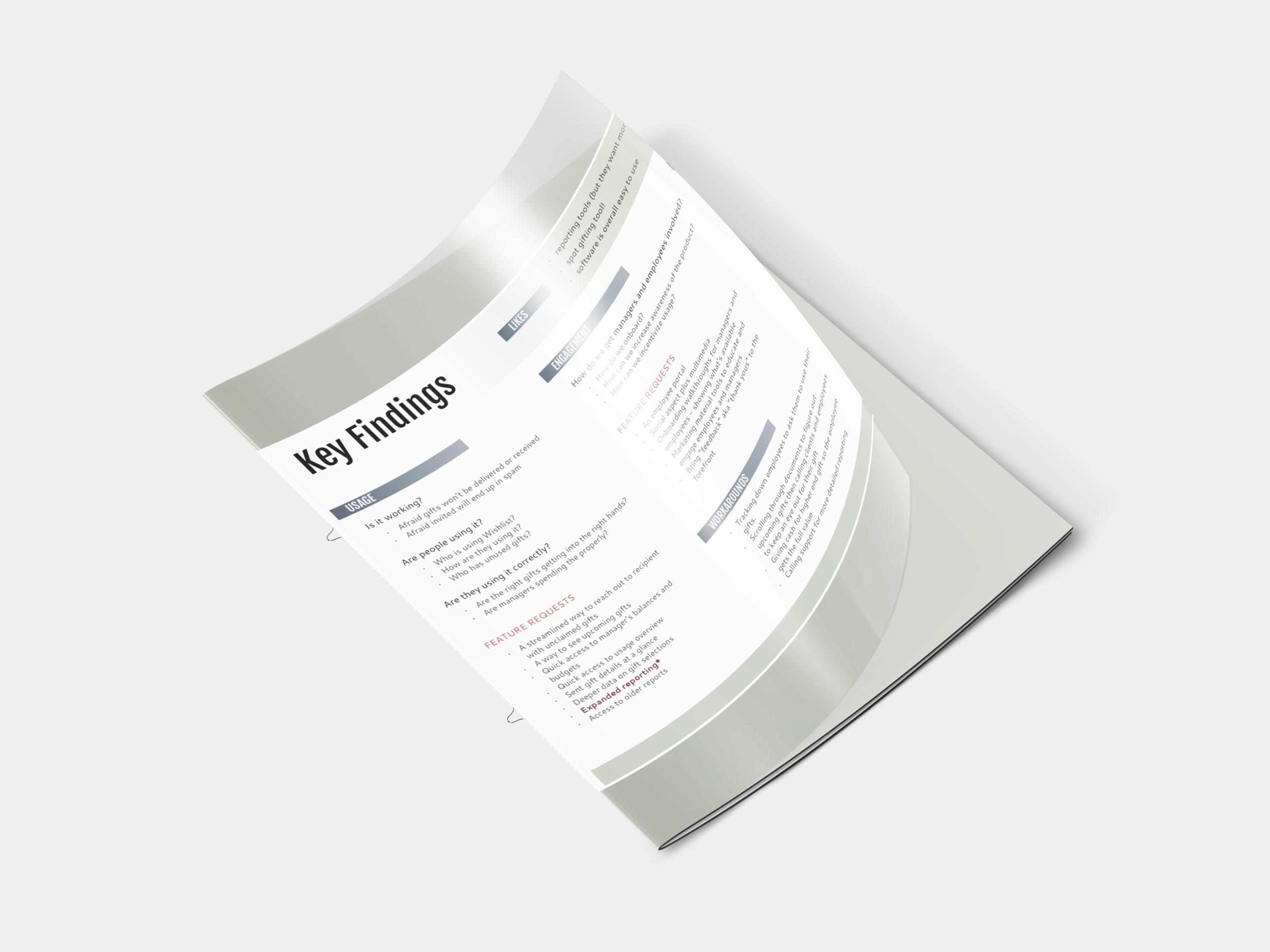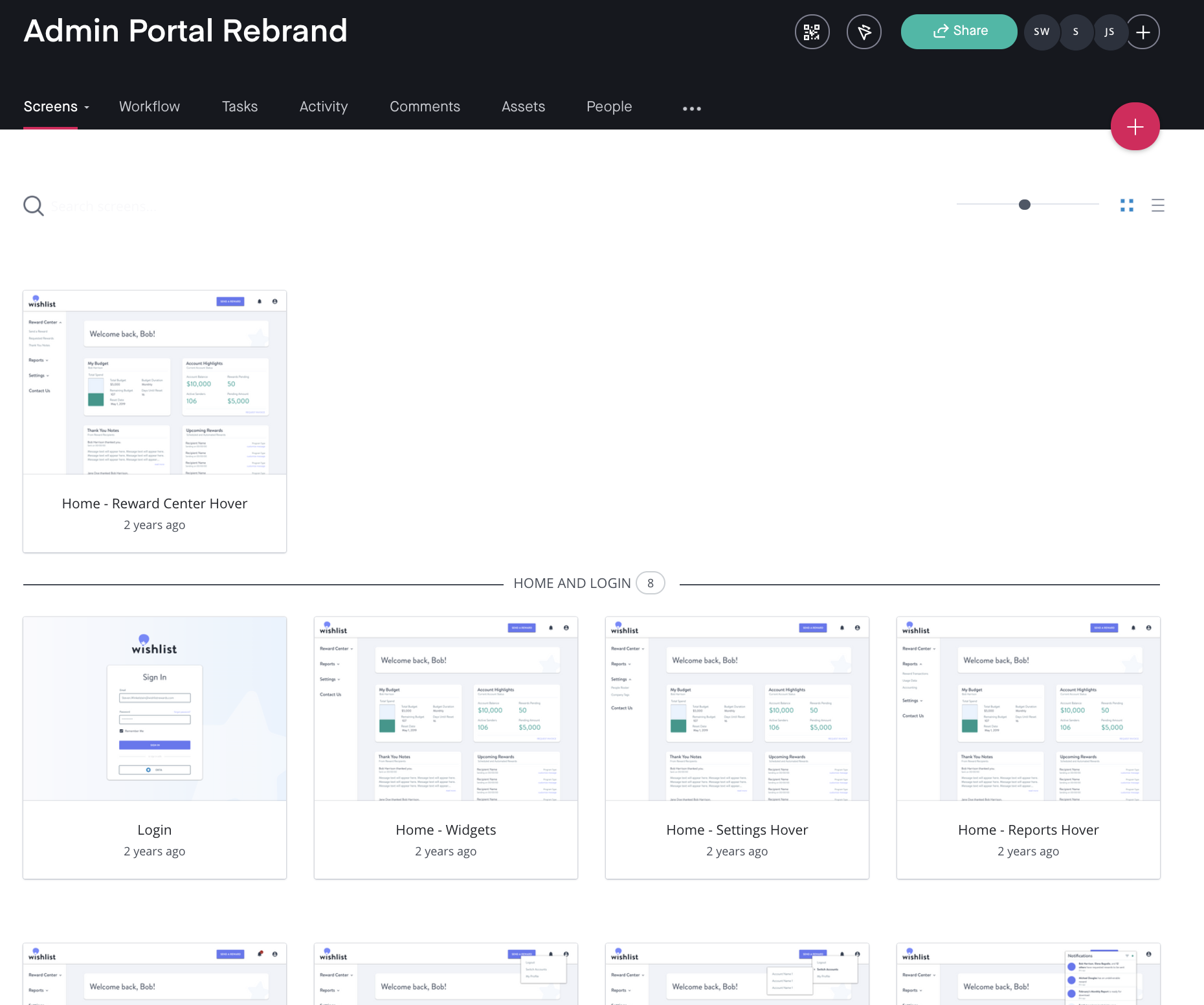Digitizing Gratitude
In 2018 Wishlist Rewards switched from a B2C gift card shop to a B2B experiential rewards program. The UI was 4-years-old and the UX role had been unfilled for 6 months.
I was hired to redesign the platform and expand the struggling product to help companies meaningfully recognize their employees.
The impact was a 2019-2021 SaaS growth of 133% and a 2020-2021 YoY revenue increase of 124%.
Part 1, The Admin
TLDR: The solution to a series of problems our HR administrative clients faced included an upgraded admin portal that addressed the users’ fears of the product not working, offered easier, incorporated more useful reporting, and gave them the tools to manage their program with confidence. The impact was a decrease in client churn, an increase in SaaS and other revenue streams, a reduction in support tickets, and continued positive feedback on usability and value.

The 4-year-old Startup
In four years the little-startup-that-could had gone from serving B2C customers to serving B2B clients, but the product couldn’t shake a mountain of tech debt, old user flows, and outdated strategies.
The overly complex and buggy marketplace was dependent on email notifications, usability was a challenge, and reliability was a daily problem.
If Wishlist was to survive, the business needed to change revenue models, transitioning from collecting gift card breakage (a model that relied on users NOT using the product), and start accumulating some serious SaaS.
Getting to work.
The Challenge
The goal was to turn a platform with an experience that no longer matched it’s services into a competitive SaaS software, able to compete with the best platforms in the HR rewards & recognition space.
My Role
The sole designer, in charge of UX research, product strategy, wireframes, prototypes, usability testing, UI mockups, and documentation for handoff to Wishlist’s offshore development team.
Learning
When I started at Wishlist, I worked quickly to band-aid a few dangerously bad user flows and a broken mobile experience, I set the stage in our company for a culture of human-centric design.
I put a pause on daily feature requests, let our development team focus on bugs, and started to learn about our current users, and the clients we needed to attract.
8 Client Interviews.
800 Sticky Notes.
The Admin Story
Problem
Wishlist’s HR administrator users need a better way to monitor usage and encourage engagement of Wishlist Rewards, with the goals of retaining and motivating employees and reporting on this progress.
Solution
An upgraded admin portal that addresses the users’ fears of the product not working, offers easier, more useful reporting, and gives them the tools to manage their program with confidence.
New Look.
Because the Wishlist platform needed such a massive update, we decided to take the opportunity to update the look and feel of our brand and product. This gave me the opportunity to build a design system from the ground up, designing more modern, material-based components.
Process
Early sketches and concepts
High level site map
InVision prototype for testing and documentation for handoff
Wireflows for each user flow of the new portal
User levels and permissions mapping
Early Mockups
Solutions

Data: I wanted use the data Wishlist collected to tell a story of the platform's performance. This helped the HR Admin feel comfortable about the product's functionality, and helped them communicate the platform's success to their stakeholders.

Reward Status: Admins needed a better way to quickly see if the Wishlist product was working. I added a status for reward delivery and added an alert indicator if something was wrong. Quick actions, accessible from the table enables users to then take the next step without having to search for a solution.

Reward Approval: Admins had found workarounds outside of our software to create an approval process for rewards. I designed a simple solution where managers could be switched on for required approval. Admins would then be able to approve or deny reward requests easily from their portal.

People Roster: Managing client's employees via onboarding and off-boarding had always been a long process with a lot of back and forth between our support team and our clients. With the People Roster, clients could upload bulk employees, or edit individuals on a granular level.

Sending Rewards: Our most central feature was one of the big pain-points for our users, who had to go through a clunky flow and input more fields than they really needed to. I simplified this flow by autofilling information our system already knew and eliminating inputs that admins could complete on a company wide level in settings.

Upcoming Rewards: Showing upcoming rewards reassured our clients that scheduled rewards were on their way. It also created a place to interact with automated programs, like birthday and anniversary rewards, for transparency and personalization.

Thank You's: While thank you's from employees about their rewards were one of the more important points of feedback for managers and admins, they would show up once in an email and then disappear. I created a place for these to live and the ability for managers to forward them to higher ups in the company.
Impact
The admin portal redesign accomplished two major wins – 1) our HR Admins no longer feared that the Wishlist platform wasn’t working, and 2) these hardworking people now had an easy way to show off their success through powerful reporting.
Wishlist saw a decrease in support tickets related to the admin portal, and at the same time freed up our CSM team from tasks that were now handled more efficiently by our clients.
Now, instead of requests and complaints, we continuously get feedback from these clients that our platform is simple and easy – music to any UX Designer’s ears. Our sales, SaaS, reward revenue, and overall profitability has increased since the release of our updated software.
I rebranded Wishlist and redesigned our admin portal and rewards marketplace in 2018. Revenue double in the following two years and is projected to double again in 2021.
In one case study, after implementing our new software one of our clients saw 37% of employees rewarded, a 92% engagement rate, and an ENPS up from 27% to 52% since the launch of their Wishlist Program.
The Marketplace.
How I redesigned the Wishlist marketplace, eliminated user confusion, redundant checkout flows, increased higher margin-redemption, and instituted an upgrade feature that continues to bring in a previously non-existent revenue stream to this day.















